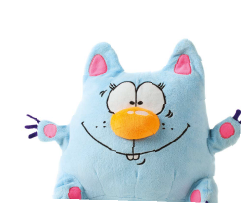My name is Claire Campbell. I have been a primary school teacher for twelve years, I have specialisms in languages, music, and forest school, and I now work in SEN and lead on Sensory Integration. All our pupils at Stone Bay are autistic and have other severe and complex learning needs. During my time working to support sensory integration needs at Stone Bay School I have created a session called a ‘Silly Session’. We love Silly Sessions at Stone Bay School and I am excited to share why!
A Silly Session is a session that practises self-regulation, encourages positive interactions, and develops communication skills. It aims to leave the group of pupils in a calm and regulated state where they are ready to learn. In this sense, it is a little like a sensory circuit as children are taken through different activities in a prescribed order with the end goal of achieving calm. In a sensory circuit however, there is an element of expectation that the children, with some support and adult modelling, will engage with certain resources in a specific way; that they will pick up the bean bags and aim them at the target and not in fact collect them all and stash them in a corner, or organise them by colour, or intently get to work at trying to release all the beans! You may know and love a child that would be more interested in the latter options – we certainly do (many!) at Stone Bay School! The Silly Session takes away this expectation, takes away the resources, and offers energising fun through positive (and silly!) interactions with grown-ups and peers.

So, what actually happens in a Silly Session?
- It starts with a song to a familiar tune to support setting your space up for a relaxed session, making the space as comfortable as possible for your learners.
- Now get everyone nice and silly – our favourites include, tickles, silly faces and laughter yoga
- Next is ‘choice’, which allows children to choose an activity and use their preferred method of communication to request more. This section can be tailored to your group and their interests. I enjoy offering trays of flour and rice to sprinkle and pattern in, twiddle toys to explore, and coloured scarves to wave and flutter. But it could be something very different for your group – perhaps books to read, or puzzles to complete.
- Finally shake their sillies out with a lively song and dance before settling down for calm time.
What are the benefits of a Silly Session?
Laughter is the best medicine! Finding ways to get children silly and laughing has many health benefits. Laughter strengthens the immune system and lowers blood pressure. Laughter can also help to relieve anxiety as it allows you to skip to the relief stage of the stress cycle.
Communication
Laughter is a form of communication. It is an accessible way for children to communicate whether they are verbal or pre-verbal. Sharing smiles and laughs with someone can be very bonding and using the ethos of ‘Intensive Interaction’1, there is a real opportunity to connect with the children, responding to children’s actions and vocalisations, respecting their communication style, allowing them to feel listened to and developing many non-verbal communication skills, such as facial expressions, eye contact, and body language. There is also a section of this session that is called ‘choice’. In this section children are able to practise using their preferred communication system, whether it be PECS, a communication book, an iPad, or spoken language. This is teaching the children that they can request tickles and silly faces as they would anything else using their communication system. This is therefore supporting the children in developing independent self-regulation skills.

Self-regulation
These sessions aim to give the children a fun and playful opportunity to practise their self-regulation skills alongside the ‘Zones of Regulation’2 – a system which is well embedded at Stone Bay School. How often do we say to children ‘calm down’? I wonder how many children actually know how to calm down? What does calm feel like? How do I achieve this? The children have lots of fun getting silly and moving themselves firmly into the ‘Yellow Zone’. They are then supported to become calm and move themselves back to the ‘Green Zone’. They are learning what silly feels like, what calm feels like, and specific activities that they can use to get calm.

“Get everyone nice and silly with tickles, silly faces and laughter yoga.”
Listening and Attention Skills
This session involves several mini transitions that include changes such as being on the floor or sitting at a table, following something on a screen, being part of a group, or interacting with an adult 1:1. This is excellent practice in following routines, transitioning between activities, tolerating preferred activities finishing, and switching between using skills needed to interact with others and those needed for independent activity.
WHERE CAN I FIND OUT MORE?
If you would like to find out more about ‘Silly Session’ then I would love to hear from you. Please complete the Google form via this link to express your interest: bit.ly/42mrHXB
1) https://www.mencap.org.uk/sites/default/files/2016-11/Intensive%20Interraction%2004.pdf
2) https://www.zonesofregulation.com/index.html
Please login to view this content
Login